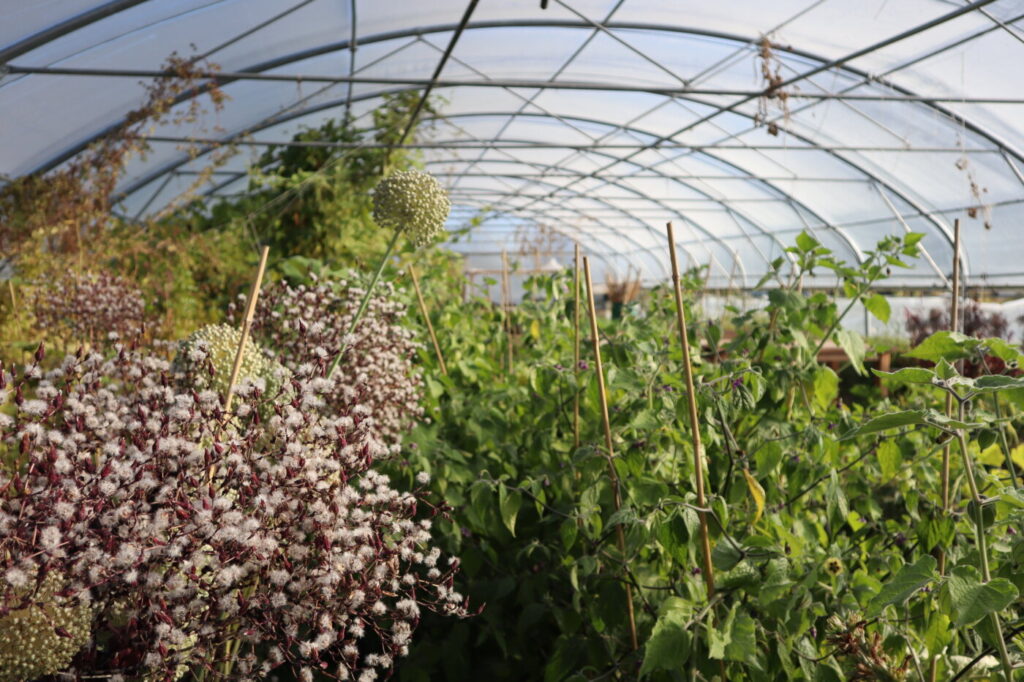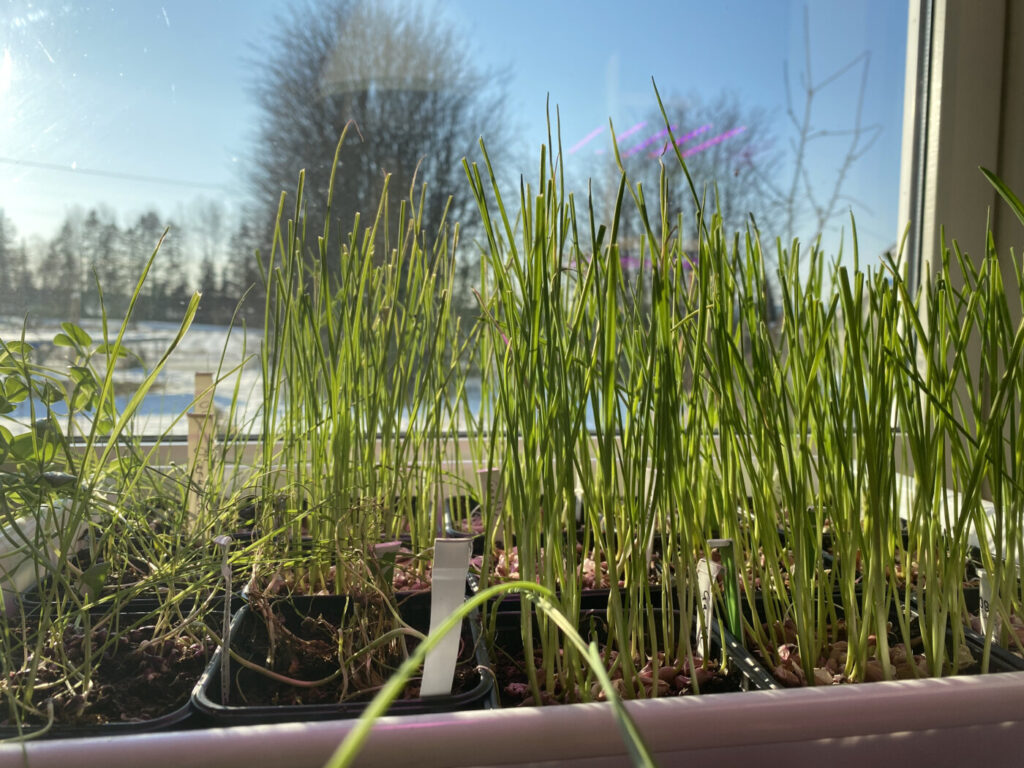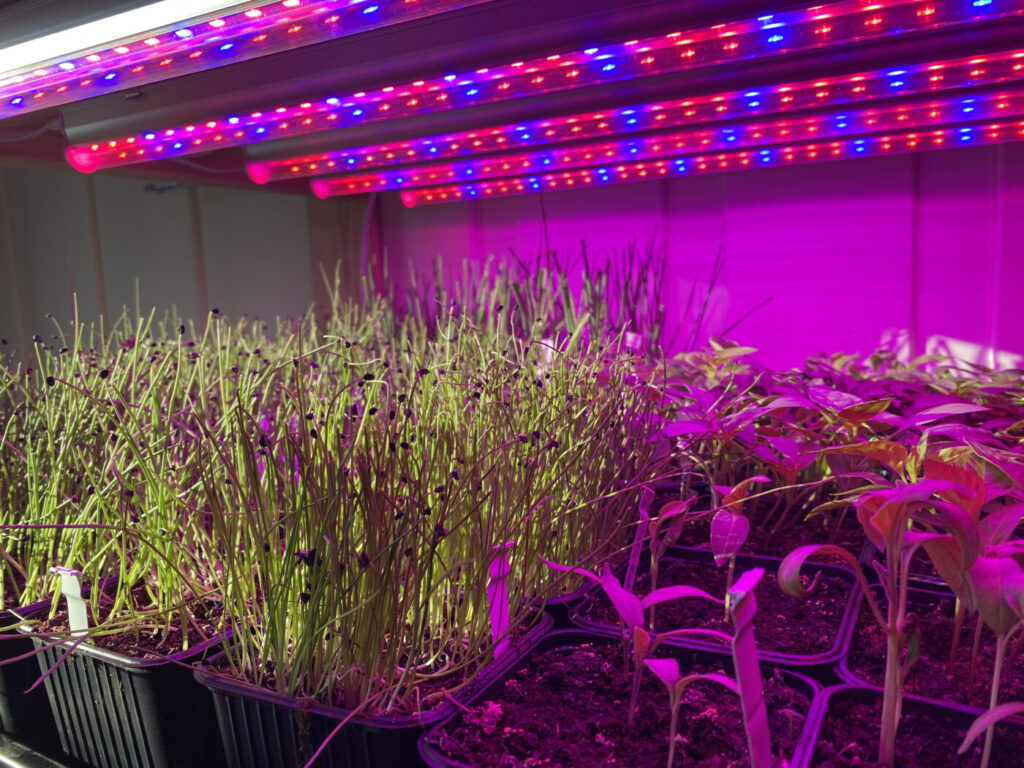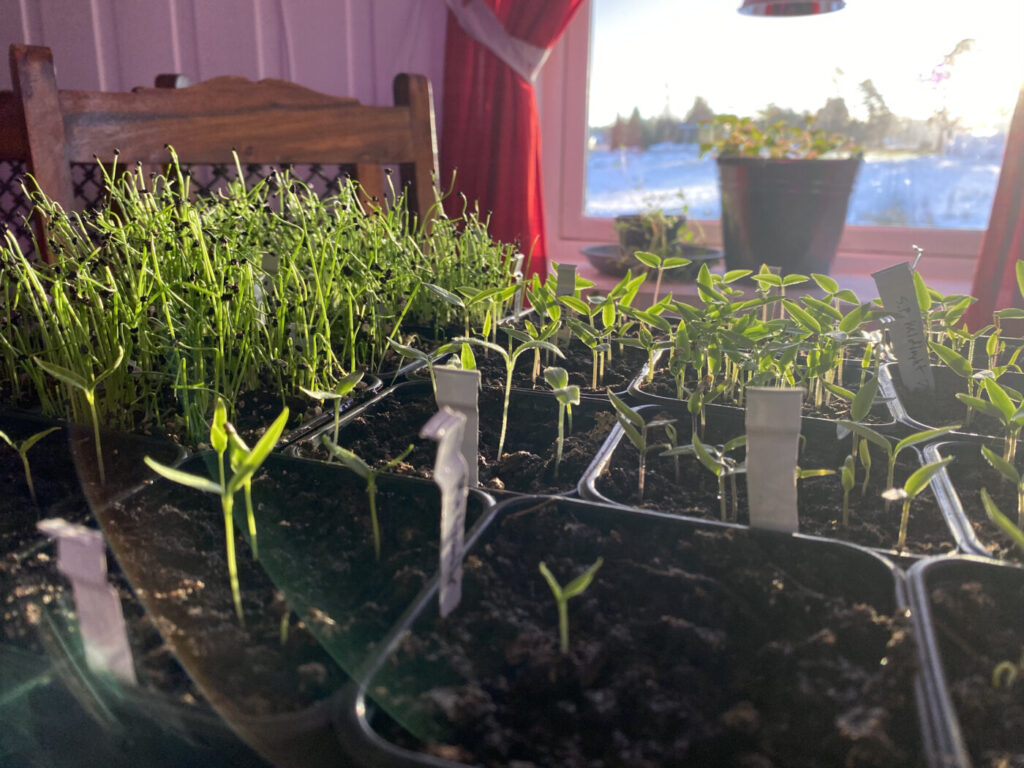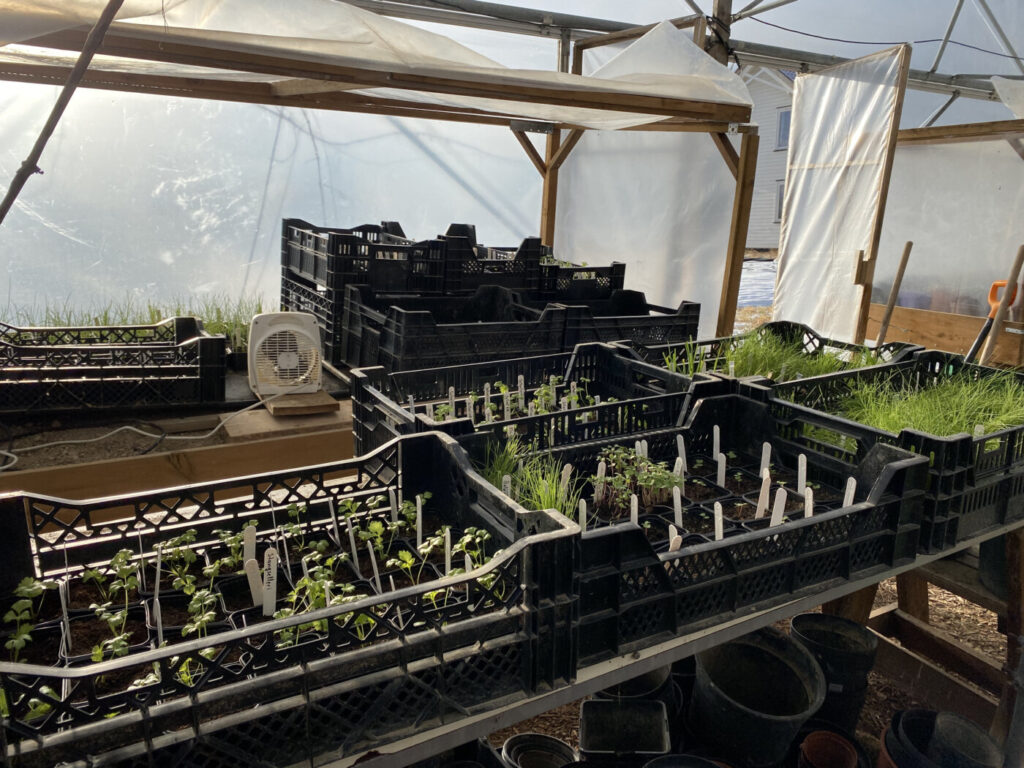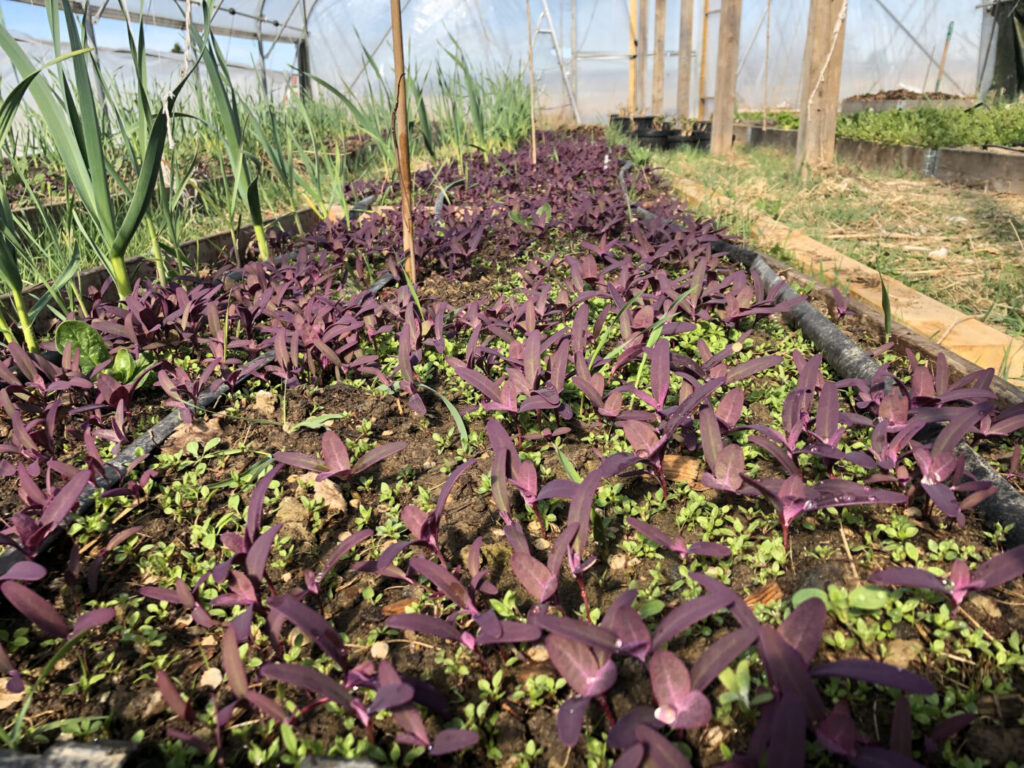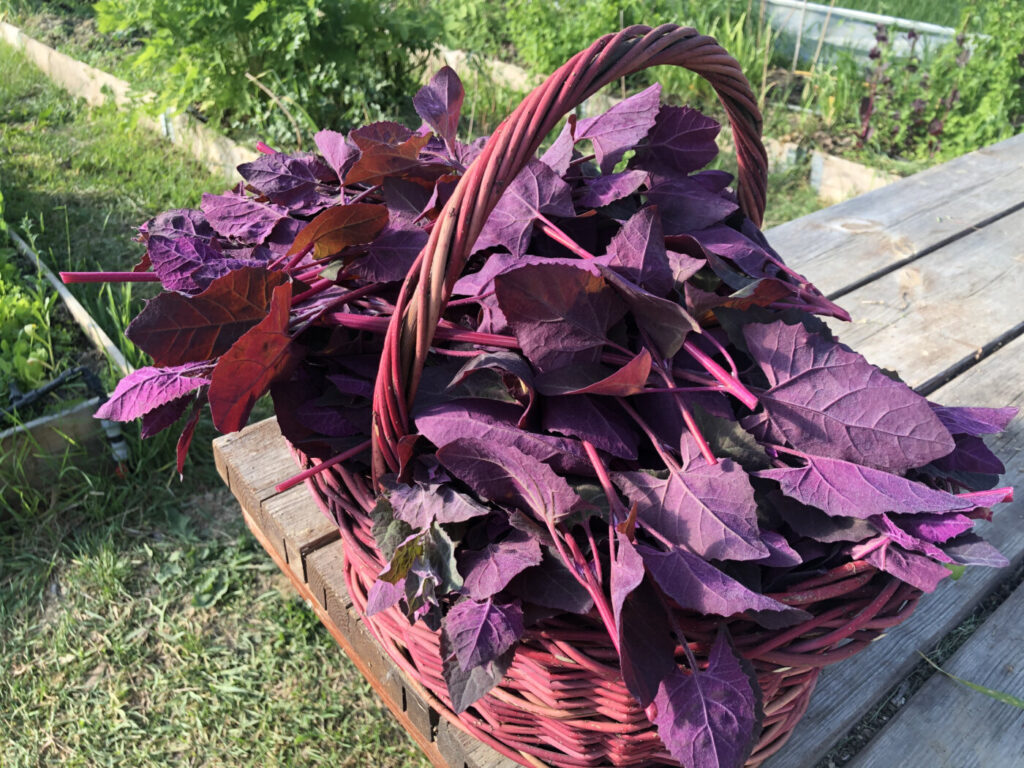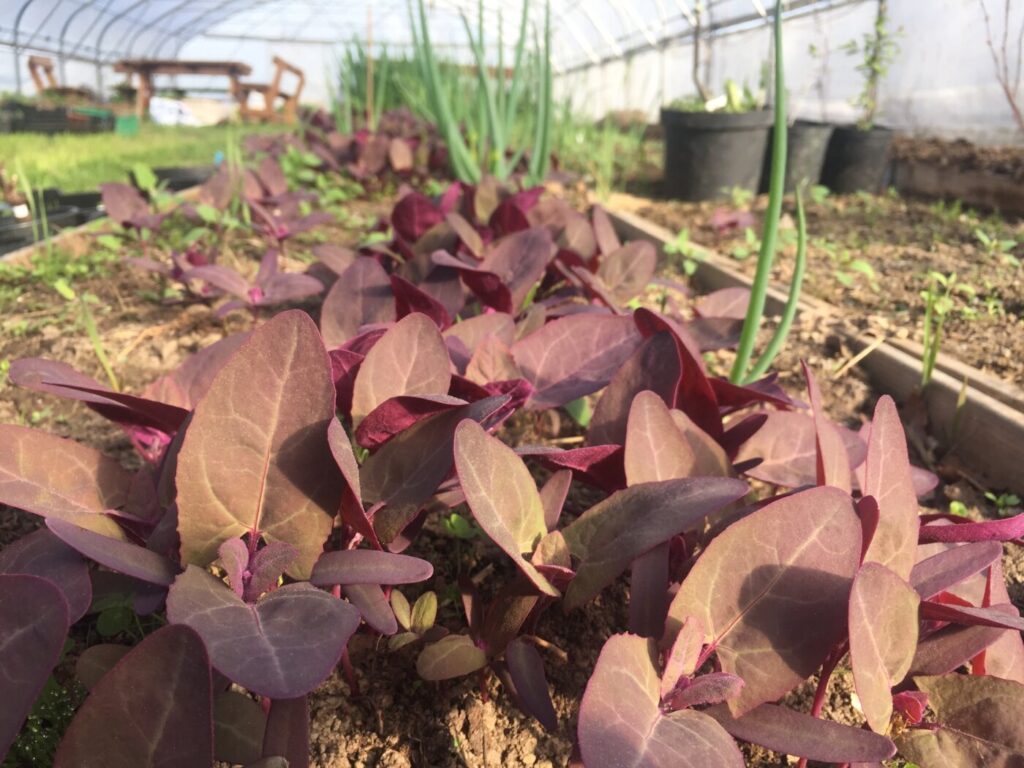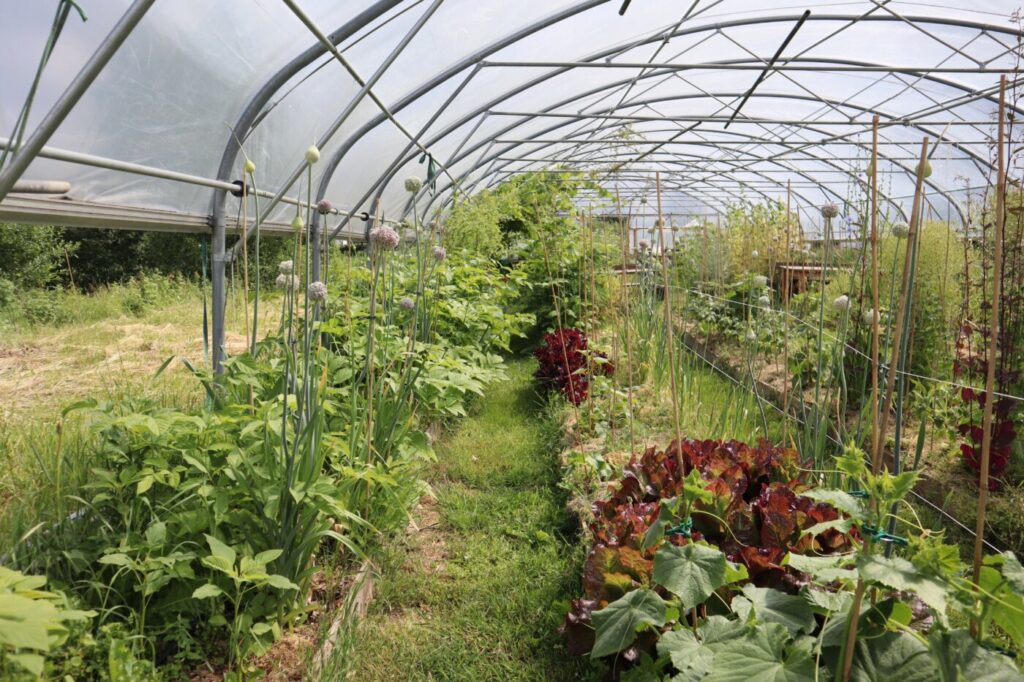By Andrew McMillion
02/04/2021
For the past ten years I´ve been gardening in what I would describe as a harsh environment. Humans have historically survived in the Nordic region primarily as small fishing, hunting and gathering communities with agriculture being a relatively peripheral endeavour primarily linked to livestock. The story of my ancestors who farmed this part of the world is dotted with one catastrophe after the other. When Islands Laki volcano erupted in 1783 for instance, it caused a famine in Norway and it wasn’t until the potato arrived during the Napoleonic years of anguish that plant based agriculture started to have a significant impact on the growth of the population (doubling from 1815-1865). Even average years could be harsh, and people have traditionally grown barley, oats and slash-and-burn rye instead of wheat on steep slopes and poor soil trying to scratch a living from the land.
My own attempts to grow in one of the better agricultural areas in Norway has not been without its share of setbacks. The first year of any significant success was 2014 and even then, I got hit by a hailstorm in late May which wiped out about half of my vegetable crop in an hour. Night-time frosts in mid-summer are not uncommon in Norway causing a serious bottleneck to anyone trying to make a go of growing plants in such harsh conditions.
All this led me to invest in a used polytunnel in 2015 which changed the game for my farm entirely. Through subsequent years of observing and interacting with vectors and fluctuations in and out of the greenhouse I have come to appreciate the function of bottlenecks in ecology. The problem is the solution as we say in Permaculture, and if you have bottlenecks like wind and cold that keep your plants from thriving, the answer is to create another bottleneck to trap heat and keep out the wind. This is really nothing new. Life is really just a series of adaptations on the original membrane of the cell that separates the inside from the outside enabling it to maintain internal order. A greenhouse is just a scaled-up version of the cell where we can protect from the disordering effects of wind, cold and grazing animals that might want to eat our plants.
Another bottleneck that a greenhouse helps us open up is the reproduction bottleneck. In the old days of slash and burn agriculture in these parts, we used to dry the rye in smoke houses in the Autumn to keep the quality of the seed from deteriorating. We slowed down the effects of disorder by creating order inside of protective structures. In the same way you can use a greenhouse to extend the season at both ends, allowing plants that would otherwise not reach the reproductive stage in which they can make viable seed succeed in doing so, while at the same time ensuring that the Autumn weather is not so windy and wet that all the seed falls off or become degraded by mould or eaten by birds and rodents. Although it is possible to save seeds from several plant families in Norway like brassicas and grains, it is not really worth the effort with other families like the carrot, nightshade, lettuce or cucurbit families. Even the amaranth family I find has a better chance of quality seed if grown in the greenhouse this far North.
From the perspective of humans working with nature in extreme conditions, finding ways to open bottlenecks is particularly useful in these times. The Biosphere has already entered the bottlenecks of the Climate and Ecology Crisis where most of life is stressed, species going extinct, and diversity rapidly being reduced. The diversity of cultivars that humans have co-evolved with over millennia have also entered serious bottlenecks and the number of people with the knowledge and ethics to do something about it has been in decline too for a century or more. Thus, we have bottlenecks in bottlenecks in bottlenecks.
We should all therefore be more aware of what bottlenecks we are creating, and which bottlenecks we can be working on opening. Humanity is at a crossroads. We can continue with an ethic that produce mindless consumers disconnected from nature, or we can make the biocentric shift to a mindful keystone culture where we are aligned with our ecosystem and do what we can to protect it and help midwife life through bottlenecks as we have in the past. This is meaningful work that is at once good for the health of the individual doing the work, the plants and animals that are being midwifed and the ecology as a whole. Working with the reproductive side of life is extremely rewarding. Every time a life form reproduces it creates a path through a bottleneck through which it is reborn. Be it a seed, a root or an egg, we all instinctively love experiencing this rebirth, this regeneration and want to protect the vulnerable stages of plants, animals and our fellow human beings.
A few examples from my personal practice that I found work well are thinking about bottlenecks in the following ways.
Spatial bottlenecks
In the dead of winter, it makes no sense to start growing plants this far North even in a greenhouse. With next to no sunlight, and -30 C, the only low energy option is to use artificial light indoors. Space then is a significant bottleneck, and we have to stack functions. The first bottleneck I open is in late January early February with a few LED grow lights for chili and aubergine plants. I want to reduce the electricity use as much as I can so I start with lights in the South facing windows and I sow 20-30 plants in each small pot. Then, when they start to get too big for the pot I open that bottleneck by potting them up in individual pots. I then have to also turn on more lights to deal with the increased use of space that more pots take. By the end of March all the windows are green with tall chili and aubergine and I have a wall in the living room and another in the dining room with lights and loads more plants.
In February I start sowing leek (also hundreds of seeds in each pot which I then pot up as needed in March). Tomatoes start in early March and by the end of March the alliums are moved to the heated bench in the greenhouse. By then the night-time temperatures are no colder than -10 C and by putting them in the heating bench I can avoid them getting more than a few degrees below freezing for a few hours at night which alliums, brassica and some amaranth species can handle. By March there is already more than 12 hours of light this far North, so the light bottleneck is totally open. Now the waiting game is on for the heat bottleneck to open.
Heat bottlenecks
I watch the 12-day forecast and try to time the movement of wave after wave of plants from the house to the heating bench in the greenhouse. I am always watching the low night-time temperature. The daytime temperature is irrelevant at this stage as the greenhouse ensures that even with sub-zero temperatures it will be nice and warm during the day. If its cloudy the temperature is actually warmer in early Spring, as the clouds act as an insulation from heat loss. On sunny days with lower temperature, the greenhouse traps heat and so the daytime temperature is always high enough.
With just the alliums, brassicas and amaranth sprouts in the heating bench I only use the heating cable in the floor of the heating bench to open the heat bottlenecks at night. Once we see a 12-day forecast with the low no more than -5 C we open up the second heating bench. This one is for nightshades (chili, tomato, tomatillo, physalis and aubergine). Here we need to heat the air too with a small heater in addition to the heating cables in the floor. This keeps the temperature a few degrees above freezing in the second heating bench which is the minimum for nightshades. I then slowly move wave after wave of nightshades out to the heating bench which act as the bottleneck opener for the greenhouse. Sometimes I move some plants back to the house again if I see they seem to be lacking energy and need a LED boost. Usually, plants prefer sunlight and if you leave them inside too long you get long thin plants. The cold makes them harder and thickens the stem, which is important for healthy plants.
Once the second heating bench is full, I start to build layers of plants which I stack on top of each other in trays two or three levels high at night. This way I slowly fill the two heating benches during the night-time with more and more plants, always coming out in the morning to open the bottleneck when its warm enough and the plants need sun.
By late March early April, I start moving all the alliums, brassicas, amaranth and other hardy plants under floating row covers without heat in the greenhouse. During the day if its sunny I take off the row-covers so they can get as much direct sunlight as possible and don’t overheat. This opens up space in the first heating bench for new waves of plants that I have started indoors or that have started to sprout after stratification such as most of the perennials. Waves are important. If you try to do everything at once, you will create a bottleneck. Sowing in waves means you can constantly observe and interact, sowing more when needed and learning from which waves do the best under which conditions. Its an art form and the more you practice with waves the more beautiful your garden will become. Here again, I have dozens or sometimes hundreds of plants in single pots to save space in the heating bench. Then, as I gradually pot up to individual pots, I keep moving out the hardiest plants from the heating benches and under the row covers.
By mid-April the nightshades are so large they take over both heating benches and I have to add an air heater to the second heating bench. I now also have a backup light and heat system in the wwoofers caravan for nightshade overflow if the heating bench bottleneck needs opening. Worst case scenario I add a floating row cover in the middle of the greenhouse and add heaters to it on the coldest nights. By now the largest tomatoes can start to go into the ground in the middle of the greenhouse where it is warmest. There is a 2-degree difference between the edge and the centre of the greenhouse which I have learned the hard way by losing tomato plants that I planted at the edge too early.
Sales bottlenecks
April is usually the month where I start selling plants. It’s always a bit of a gamble as one does not want to be at a market selling plants when it’s snowing or the wind can stress and even kill plants. On the other hand, people are eager to get a hold of small plants by then and my greenhouse is starting to fill up. The best way for me to sell is at Reko-rings which you can read about here. They allow me to deliver pre-ordered plants directly to customers reducing the time spent at market and the exposure the plants experience. As I start to sell plants this opens the space bottlenecks in the greenhouse and allows me to start sowing more plants in the cucurbit and legume families. These plants need both heat and space and grow quickly. Starting too soon is just a waste of time and usually I wait till the last week of April before sowing cucumbers and squash. The only exception to this is mouse melon (Melothria scabra) which take more time and remain small. These I lump together with the nightshades.
Soil bottlenecks
The new bottleneck is now the outdoors. We have to wait till the soil warms up enough that it is workable and then till it’s warm enough to place hardy transplants like brassicas into. Before that happens I try to get hardy ground covers going. mountain spinach (Atriplex hortensis) is the most cold hardy annual in the amaranth family and is an establishment plant that makes the best living mulch. I use this both in the greenhouse and outdoors to bring energy to the soil as early as possible. As soon as it makes sense in March, I start removing the leaf mulch that has been protecting the beds during the winter and start broadcasting Atriplex seeds. The sprouts can handle – 7 C and survive with no problem and the faster they get growing the more quickly they energize the soil. This creates gorgeous red beds with living mulch that are the first waves of fresh veg along with spinach that come back on their own from last winter. Alliums of all forms also overwinter and of course nettle and other perennials like lovage and sweet cicely (Myrrhis odorata). Nothing beats eating early veg and that is a significant bottleneck opener for my mood and energy levels. More and more perennials are the way to go, and one should always be adding as many perennials to the farm as possible to open the spring hunger gap up and reduce the need to disturb soil.
I weed out the mountain spinach and plant whatever is intended for the bed as needed. Thus the ground is always covered with living plants and I am maximizing the photosynthesis and life building processes in the soil. At the same time, I always have spinach to eat which goes well with alliums which I have in spades.
With the soil prepped we open up space in the greenhouse in consecutive waves. First, as the alliums and brassicas start heading out of the greenhouse to the raised beds in early May, the empty space can be used to establish tomatoes, peas and French beans in the greenhouse. Then, by mid-May when the danger for night-time frost has passed, you can start risking a few of the largest squash and pumpkin transplants (adding floating row covers outdoors to protect against night-time lows). As confidence builds, more and more plants leave the greenhouse for their permanent spots in the field. This then gives space for cucumbers in the greenhouse as more space becomes available. Gradually, all the raised beds in the greenhouse fill up and the walkways become the space for the remaining plants to be sold at market. The last plants to leave the heating beds are the aubergine and chili. I dedicate a row in the greenhouse for these plants which are also the last plants to lose their row cover (and the first to get it added again in the fall).
Seed bottlenecks
I could (and probably will) write an entire blog just on how to open seed bottlenecks. There are so many ways this is done, and each family has its own tricks. We need to make sure we have enough genetic variation for one. In some cases, we want to maintain characteristics by limiting their ability to cross with other varieties, and in other cases we need to select out plants with characteristics we don’t like. We can add artificial selection pressures to plants or force them through natural selection pressures to ensure we get good quality seed. Opening up greenhouses to insects for pollination or wind at critical flowering periods and creating artificial bottlenecks so pollination does not happen at others are techniques of the art of seed saving. Above all, timing is critical, as a seed that has dropped to the ground or has blown away is most likely wasted in our harsh climate. These are all various forms of either opening or closing bottlenecks resulting in seeds that are adapted to local conditions with the aid of human consciousness and appropriate technology.
The seed savers life is a constant ebb and flow of wave after wave of life moving through one bottleneck after the other. At any stage damage can be done to an ecology if there is not enough water, light, heat or soil. Too much of these will also do damage and it is the job of the vigilant keystone to observe and interact at the right time and in resonance with his or her ecology.

